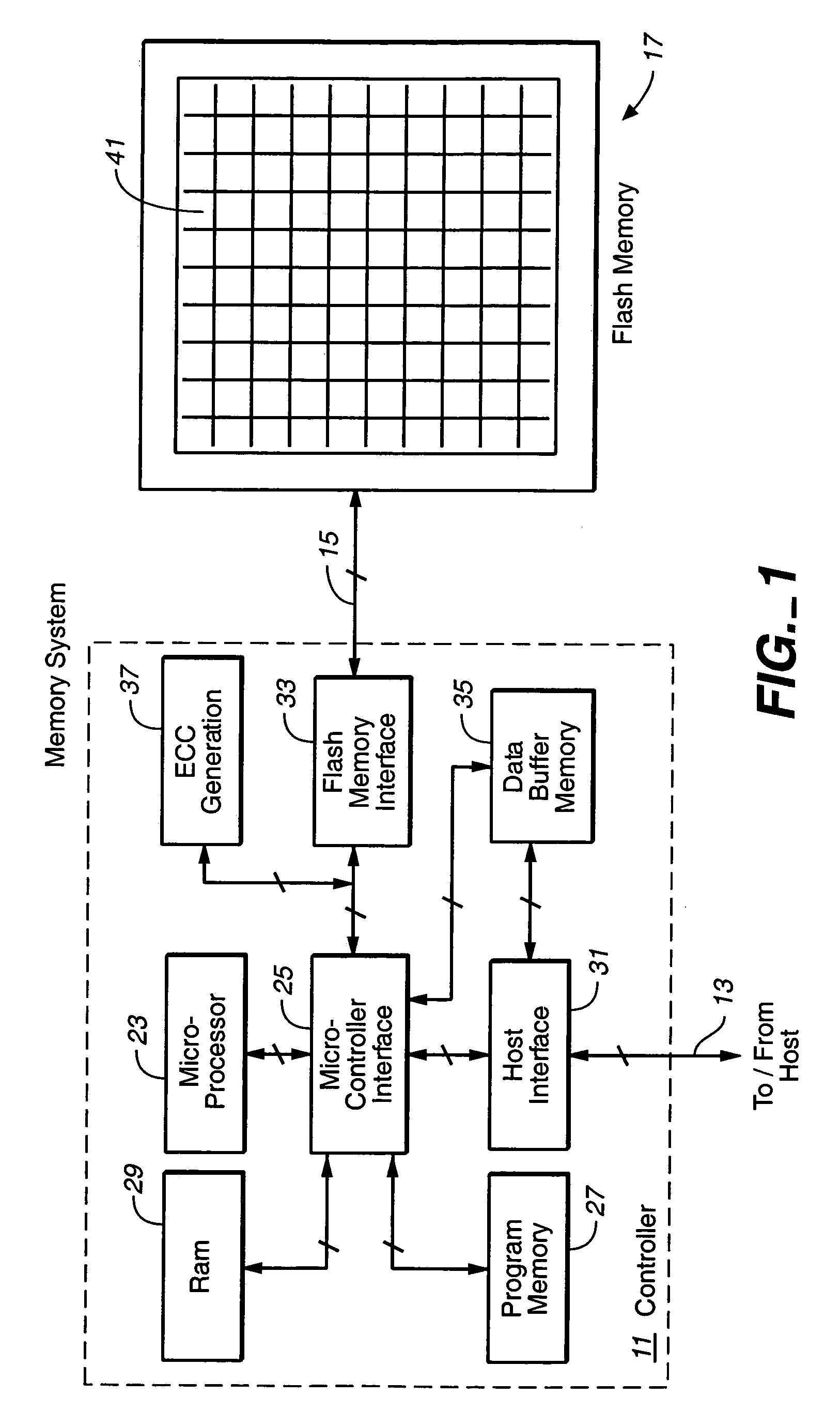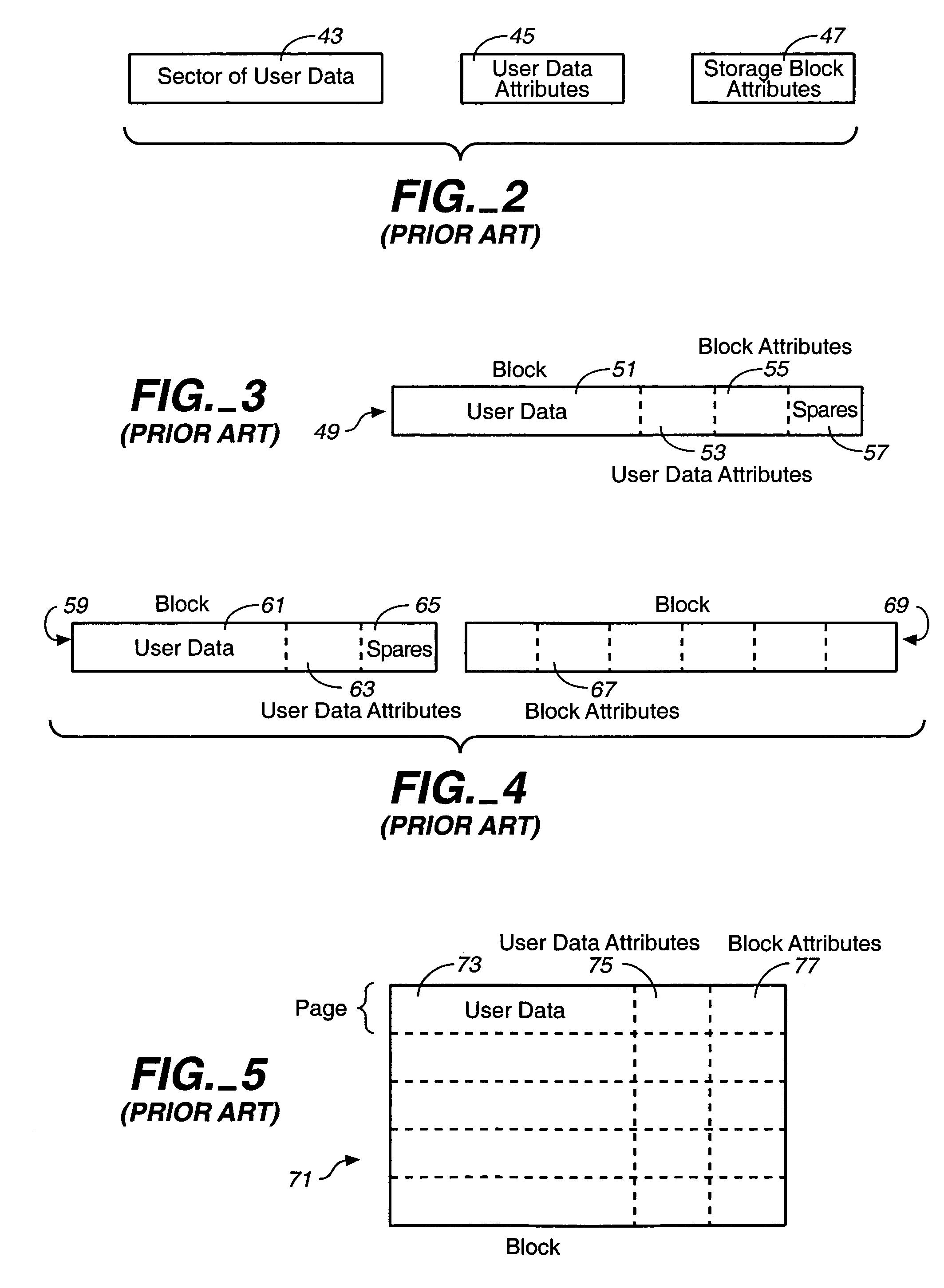Techniques for operating non-volatile memory systems with data sectors having different sizes than the sizes of the pages and/or blocks of the memory
a non-volatile memory and data sector technology, applied in the field of semiconductor memory systems, can solve the problems of increasing power requirements, potential disturbances of adjacent cell charges, and affecting the performance of adjacent cells, so as to achieve the effect of effectively utilizing the storage capacity of pages and improving performan
- Summary
- Abstract
- Description
- Claims
- Application Information
AI Technical Summary
Benefits of technology
Problems solved by technology
Method used
Image
Examples
first system embodiment
A First System Embodiment
[0039]FIG. 7 illustrates the array and data architectures of one specific existing commercial memory system, and FIGS. 8–11 show modifications made to this system in accordance with the present invention. The existing memory array 101 (FIG. 7) is divided into a large number of blocks B, 4096 of them in this case. Each of these blocks, such as a block 103, is divided into a number of pages P, in this case 32 pages per block. Each page, such as the page 105, is configured to store 512 bytes of user data 107 and 16 bytes of attribute (overhead) data 109. The page attribute data 109 includes an ECC 111 calculated from at least the user data 107, a logical block number (LBN) 113 in which the page is located, and two flags 115 and 117. The ECC 111 is normally an attribute of the user data. A separate ECC (not shown) may be calculated from the remaining page attribute data and stored within the page attribute data 109 but some fields, such as the fields 113, 115 an...
second system embodiment
A Second System Embodiment
[0053]Application of the invention to another type of non-volatile memory system with a much different architecture is briefly described with respect to FIGS. 12 and 13. The memory array is divided into an even number of units, such as eight, two such units 0 and 1 being illustrated in FIG. 12. A pair of adjacent units, termed a plane, may share peripheral circuits, such as word line decoders. Each unit contains a large number of blocks of memory, such as a block 161 in the unit 0 and a block 163 in the unit 1. The individual blocks are in turn divided into multiple pages of memory.
[0054]Rather than forming a full page from memory cells of a single block, which is usually done, the example shown puts one-half 165 of a given page in the block 161 of the unit 0 and the other one-half 167 of the same page in a block of the unit 1. The two blocks may have the same relative address within the units, and may be formed of a single row of memory cells that has a co...
PUM
 Login to View More
Login to View More Abstract
Description
Claims
Application Information
 Login to View More
Login to View More - R&D
- Intellectual Property
- Life Sciences
- Materials
- Tech Scout
- Unparalleled Data Quality
- Higher Quality Content
- 60% Fewer Hallucinations
Browse by: Latest US Patents, China's latest patents, Technical Efficacy Thesaurus, Application Domain, Technology Topic, Popular Technical Reports.
© 2025 PatSnap. All rights reserved.Legal|Privacy policy|Modern Slavery Act Transparency Statement|Sitemap|About US| Contact US: help@patsnap.com



